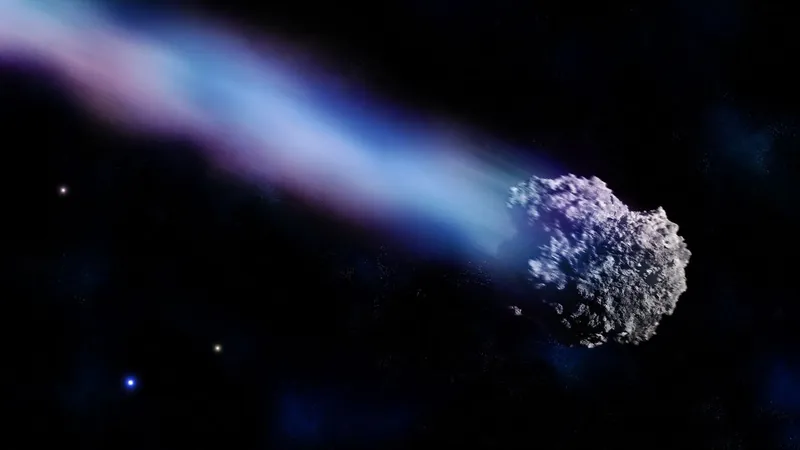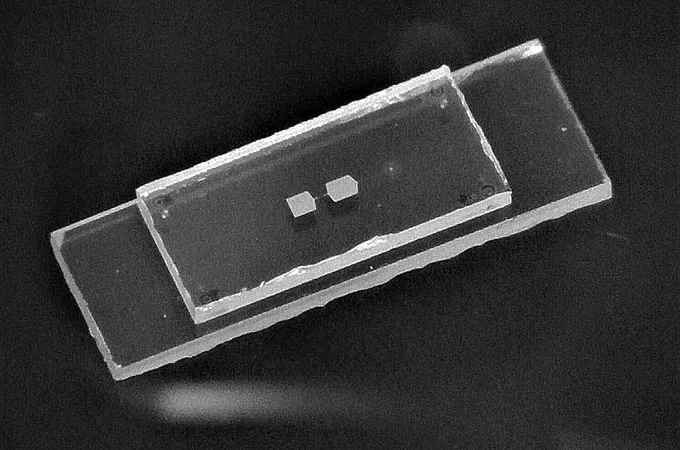
Detecting 'Planet-Killer' Comets: How 'Crumb Trails' of Meteoroids Could Give Us a Life-Saving Head Start!
2024-11-07
Author: William
Scientists are uncovering a groundbreaking method to identify elusive comets that could potentially threaten Earth—years before they make their approach—by tracking the unique "crumb" trails of meteoroids they leave behind.
While many comets regularly visit our solar system, some are rare gems, like the upcoming A3 Tsuchinshan-ATLAS, which only makes an appearance every two centuries or more. These long-period comets (LPCs) have the potential to be dangerous; studies suggest they could account for around 6% of all impacts on Earth. This is no small matter, as a significant comet impact could unleash catastrophic energy—imagine an asteroid 1 kilometer wide colliding with Earth at immense speed, equivalent to 750,000 megatons of TNT!
Until now, spotting such threats has been a Herculean task, as only a handful of LPCs that venture close to our planet—within about 4.65 million miles—have been identified. However, researchers have developed an exciting strategy that leverages the trails of meteoroids launched into space when comets approach the sun. The heat from the sun vaporizes the comet's icy core, releasing dust and rocks that form a meteoroid stream, following a path parallel to that of the comet itself. Samantha Hemmelgarn, a leading graduate researcher at Northern Arizona University, explained this method simplifies tracking LPCs because these streams are less affected by gravitational tugging from larger planets.
As Earth traverses these meteoroid streams, some particles ignite upon entering our atmosphere, resulting in breathtaking meteor showers. By studying these phenomena, scientists can gather valuable data on the speed and trajectory of the meteoroids, enabling them to trace back to the parent comets.
Excitingly, new advancements in observational technology, particularly the upcoming Legacy Survey of Space and Time (LSST) powered by the Vera C. Rubin Observatory, could revolutionize our ability to detect these faint comets before they loom as a threat. While we're not sure just how far in advance we can spot them, the implications are immense.
Researchers focused on analyzing 17 meteor showers linked to known LPCs and virtually simulated these comets at brightness levels detectable by the LSST. They discovered that many of the actual comets aligned closely with these simulated paths, indicating a high success rate for identifying potential threats. This innovative back-projection method of meteoroid streams can substantially narrow down search areas for parent comets, providing years of warning time—perhaps even decades—for future impacts.
But the excitement doesn't end there! Hemmelgarn shared that scientists aim to apply their findings to hunt down currently neglected meteoroid streams, which could reveal previously unknown LPCs. In fact, a staggering 247 meteoroid streams that intersect Earth’s path are on their radar according to a recent guidebook.
However, it's essential to approach this discovery with caution. Limitations still exist; for instance, the method may not detect high-risk comets with orbital periods exceeding 4,000 years, as their meteoroid streams might be too sparse to notice.
In conclusion, the ability to track these celestial fat-bears could mean the difference between disaster and safety for our planet. With anticipated advancements and meticulous research, we might just be on the verge of developing a strategic defense against the deadliest threats hurtling toward us from the far reaches of our solar system. Stay tuned as we delve deeper into a cosmic race for survival!









 Brasil (PT)
Brasil (PT)
 Canada (EN)
Canada (EN)
 Chile (ES)
Chile (ES)
 España (ES)
España (ES)
 France (FR)
France (FR)
 Hong Kong (EN)
Hong Kong (EN)
 Italia (IT)
Italia (IT)
 日本 (JA)
日本 (JA)
 Magyarország (HU)
Magyarország (HU)
 Norge (NO)
Norge (NO)
 Polska (PL)
Polska (PL)
 Schweiz (DE)
Schweiz (DE)
 Singapore (EN)
Singapore (EN)
 Sverige (SV)
Sverige (SV)
 Suomi (FI)
Suomi (FI)
 Türkiye (TR)
Türkiye (TR)